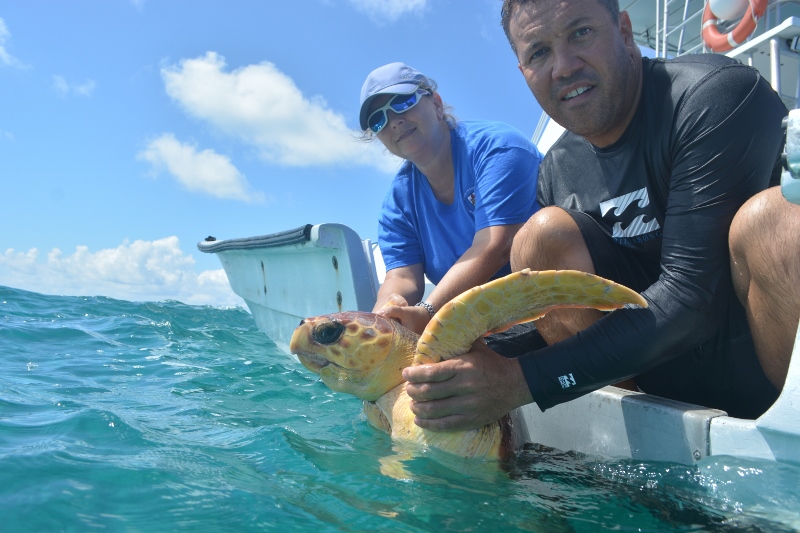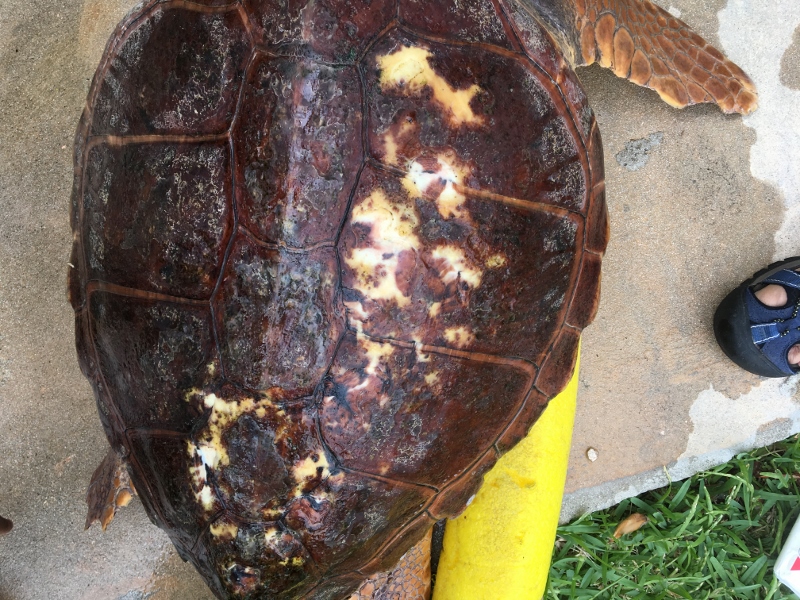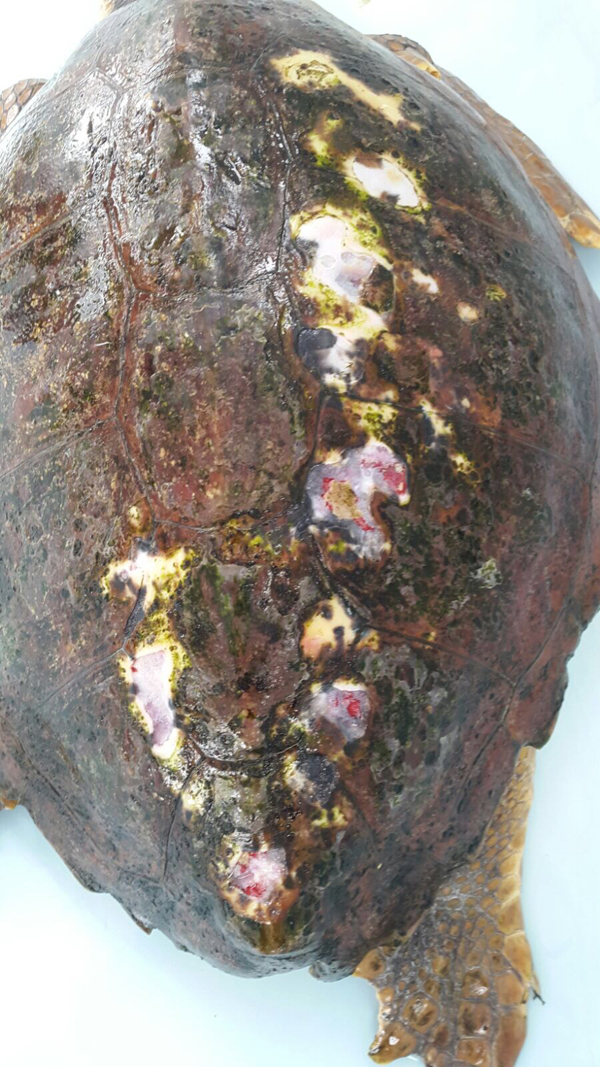Recent News
Historic deep sea dive off Bermuda to be celebrated in New YorkWednesday, August 13, 2014
A New York institution is this week preparing to celebrate the 80th anniversary of naturalist William Beebe’s historical Bathysphere dive off the coast of Bermuda.
Turtles fall victim to boats and fishing hooks
Wednesday, August 13, 2014
The public is again being asked to be careful on the Island’s waters to protect sea turtles after the bodies of several young turtles were found with injuries related to human activity.
Photos: Ocean Vet Team Tags Turtles
Monday, August 11, 2014
Dr. Neil Burnie, Choy Aming, and the rest of the Ocean Vet team recently spent a day tagging turtles for tracking, assisting Peter Meylan and Jennifer Gray from the Bermuda Turtle Project.
BAMZ Welcomes Three New Tammar Wallabies
Saturday, August 09, 2014
The Bermuda Aquarium, Museum, and Zoo [BAMZ] recently acquired three wild Tammar Wallabies, including two males and a female, all in an effort to help New Zealand to control the population of the species in that country.
Shark puts on an impressive show for film crew
Saturday, August 09, 2014
Spectacular footage of Bermuda’s tiger sharks has been captured by local photographer Choy Aming in a dive alongside ‘Ocean vet’ Neil Burnie, and is set to air on network TV.
About
GovernanceAbout Us
Newsletter
Latest News
Gift & Bookstore
Contact
General Inquiries
info@bzs.bm
Latest News
All the latest updates and news from the Bermuda Aquarium, Museum, and Zoo, one of Bermuda's leading visitor attractions!
A loggerhead turtle named ‘Chad’ — who was found entangled in cargo netting last October — was released into the waters off our coast last week after a lengthy rehabilitation at Bermuda Aquarium Museum and Zoo [BAMZ].
“Divers from Blue Water Divers found Chad floating in Ely’s Harbour in October of last year. Chad was in considerable distress because he was tightly entangled in a massive amount of cargo netting,” the Department of Environment and Natural Resources said.
“The Blue Water team removed the netting but discovered that Chad could not dive below the surface so they brought Chad to BAMZ.

“Dr. Ian Walker, Principal Curator at BAMZ, examined the loggerhead. There were significant grooves in the marginal scutes of the carapace [grooves in edge of top shell] which would indicate that the turtle was entangled for a long time. It took about 10 days for Chad to start diving to the bottom of his enclosure.
“One theory for the buoyancy problem is that turtles hyperinflate their lungs as a survival mechanism. Since they are air breathers, making themselves positively buoyant would assist them staying at the surface to breathe in spite of the weight of the net. Another theory is that this is how their bodies respond to an infection.
“There were numerous locations where the shell was ulcerated and there was a concern the turtle was septic and therefore would not have a very good prognosis. Dr. Walker and the team knew Chad needed food, antibiotics, a clean environment and time to recover. The aquarists kept Chad well fed and clean. Happily, he began eating an average of 1.5lbs of herring a day shortly after his arrival.

“The healing process took quite a while; turtles can be quite resilient but they take their time getting better. Winter water temperatures slowed things down but as the water started to warm up, the healing moved along nicely. The loggerhead was examined monthly to assess the ulcerated shell. There were several spots that needed new bone growth.”
Roma Hayward, Animal Care and Quarantine Officer, was responsible for debriding the wounds monthly to assist with the healing process.
“Chad survived a terrible ordeal and has healed well,” she said. “He will have a microchip and flipper tags in the event he shows up somewhere else. He will be able to be identified and it signifies that he was captured before.”

The Department added, “Of the seven turtles species around the world, five have been found locally with the most common being Greens and Hawksbills followed by Loggerheads. Bermuda normally gets post-hatchlings [younger than a year] in the winter and spring that get washed in with sargassum weed but Chad is unusual in that he is much older.
“Unlike the other turtles found in the Atlantic the loggerhead pelagic [open ocean] stage is quite protracted as these animals spend many years drifting with the currents and sargassum. Chad is expected to eventually settle in the Eastern Atlantic to start the next stage of his life.
The Department also noted that Chad may not, in fact, be male, as his caregivers are unsure of the gender at this time since Chad is in the intermediate stage of development [neither juvenile nor adult]. These turtles do not develop any sexual dimorphic features until adulthood.


